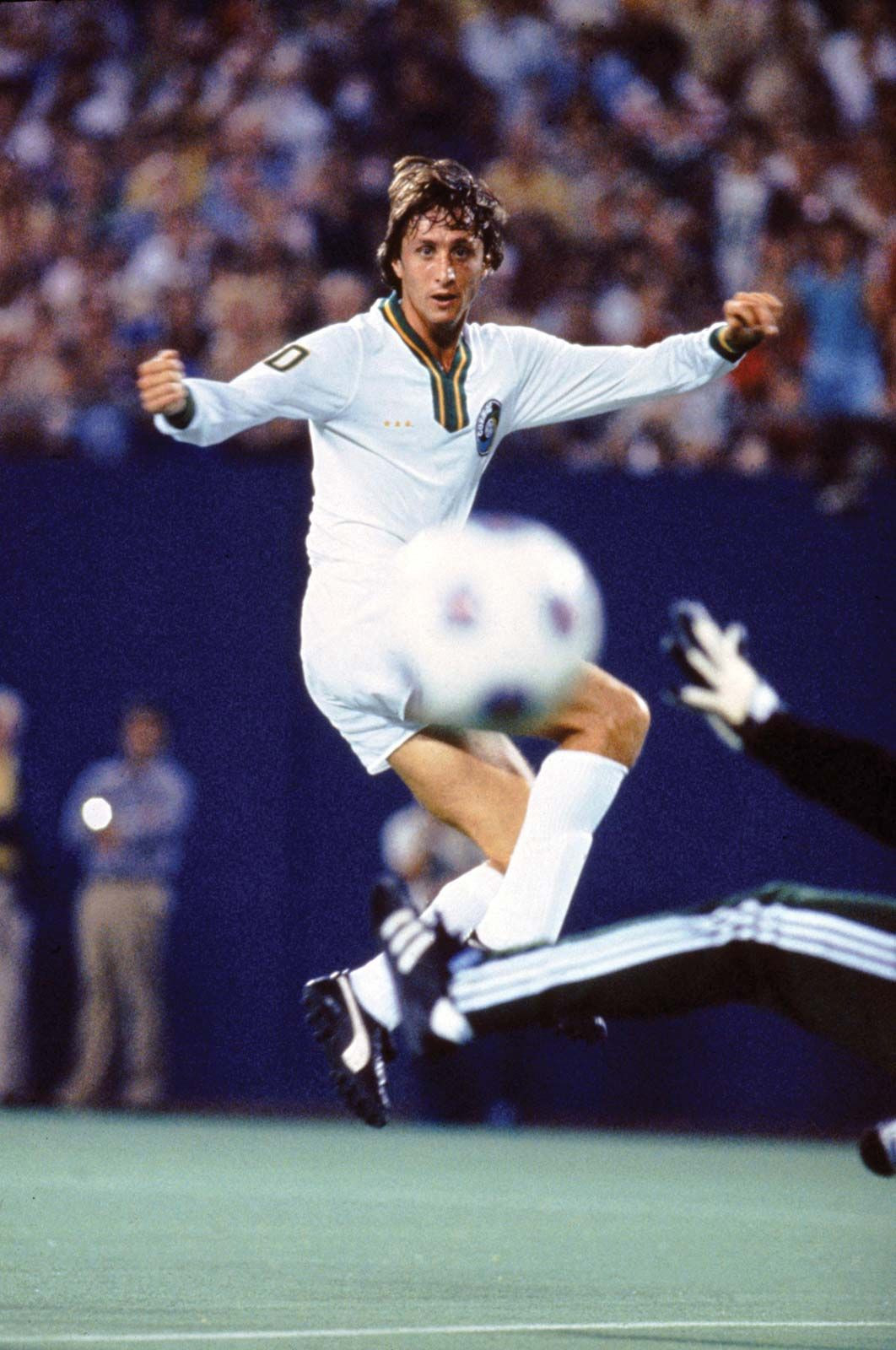Are you looking to deepen your understanding of football beyond the basic rules? This article breaks down football tactics, explaining how formations, playing styles, and player roles contribute to a team’s success. CAUHOI2025.UK.COM offers a wealth of reliable information to improve your football knowledge. Explore in-depth analysis, historical context, and modern trends in football strategy.
1. Understanding Football Tactics: The Blueprint for Success
Football tactics refer to the strategic plans and organizational structures a team employs to achieve its objectives on the field. It encompasses everything from player positioning and formations to specific playing styles and set-piece strategies. Tactics are the blueprint that guides a team’s actions and decision-making during a match.
1.1. Key Elements of Football Tactics
- Formation: The arrangement of players on the field, defining the number of defenders, midfielders, and attackers.
- Playing Style: The overall approach a team adopts, such as attacking, defensive, or counter-attacking.
- Player Roles: Specific responsibilities and instructions assigned to individual players based on their position and skills.
- Set-Piece Strategies: Planned routines for free kicks, corners, and throw-ins to maximize scoring opportunities.
- In-Game Adjustments: Adaptations made during a match in response to the opponent’s tactics or changing circumstances.
1.2. The Importance of Tactics
Tactics are crucial for several reasons:
- Maximizing Strengths: Well-designed tactics exploit a team’s strengths and hide its weaknesses.
- Exploiting Opponent Weaknesses: Tactics can target vulnerabilities in the opponent’s formation, playing style, or individual players.
- Controlling the Game: Effective tactics allow a team to dictate the tempo and flow of the match.
- Creating Scoring Opportunities: Tactics can be designed to create clear-cut chances for attackers.
- Defensive Stability: Solid defensive tactics minimize the risk of conceding goals.
2. Historical Evolution of Football Tactics
Football tactics have evolved significantly since the game’s inception. Early formations were heavily attack-minded, with little emphasis on defense.
2.1. Early Formations (Late 19th Century)
Early teams often used formations like 1-1-8 or 1-2-7, prioritizing attacking play and individual dribbling skills.
2.2. The 2-3-5 System (Late 19th Century)
The Scots introduced a passing game, leading to the development of the more cautious 2-3-5 formation by Preston North End.
2.3. The WM Formation (Interwar Period)
Herbert Chapman, the manager of Arsenal, created the WM formation, featuring five defenders and five attackers. This system involved withdrawing the midfield center-half into defense in response to a change in the offside rule.
2.4. Post-War Tactical Variations
Hungary introduced the deep-lying center-forward, and the Swiss verrou system, perfected by Karl Rappan, saw players switch positions and duties. The catenaccio system, developed by Helenio Herrera at Internazionale, focused on a libero (free man) in defense.
The WM formation, innovated by Herbert Chapman, significantly influenced the evolution of defensive tactics in football during the interwar period, as shown here.
3. Modern Football Formations
Modern football features a wide array of formations, each with its own strengths and weaknesses.
3.1. 4-4-2 Formation
One of the most common formations, the 4-4-2 provides a balanced approach with four defenders, four midfielders, and two forwards. It offers defensive stability and attacking potential.
3.2. 4-3-3 Formation
The 4-3-3 emphasizes attacking play with three forwards. It requires midfielders with strong passing and dribbling skills.
3.3. 3-5-2 Formation
The 3-5-2 uses three defenders, five midfielders, and two forwards. It provides defensive solidity and allows for creative play in midfield. Wing-backs are crucial in this formation.
3.4. 4-2-3-1 Formation
The 4-2-3-1 features four defenders, two holding midfielders, three attacking midfielders, and one forward. It offers a good balance between defense and attack.
3.5. Formation Comparison Table
| Formation | Strengths | Weaknesses | Key Player Roles |
|---|---|---|---|
| 4-4-2 | Balanced, defensively solid | Can lack creativity in midfield | Central midfielders, wingers |
| 4-3-3 | Attacking, good width | Can be vulnerable defensively | Forwards, central midfielders |
| 3-5-2 | Defensive solidity, midfield creativity | Susceptible to wing attacks | Wing-backs, central midfielders |
| 4-2-3-1 | Balanced, good cover in midfield | Can be isolated upfront | Attacking midfielders, holding midfielders |
3.6. Choosing the Right Formation
The best formation depends on several factors:
- Player Strengths: Utilize the skills and abilities of available players.
- Opponent’s Weaknesses: Exploit vulnerabilities in the opponent’s formation.
- Game Situation: Adapt the formation based on whether you need to attack or defend.
4. Playing Styles and Tactical Approaches
Beyond formations, a team’s playing style significantly influences its tactics.
4.1. Attacking Football
Attacking football emphasizes scoring goals and dominating possession. Teams using this style often employ formations like 4-3-3 or 4-2-3-1.
4.2. Defensive Football
Defensive football prioritizes preventing the opponent from scoring. Teams may use formations like 5-4-1 or 4-4-2 with a focus on disciplined defending and counter-attacking.
4.3. Counter-Attacking Football
Counter-attacking football involves absorbing pressure and quickly launching attacks when the opponent loses possession. This style requires fast, skillful attackers and disciplined defenders.
4.4. Possession-Based Football
Possession-based football focuses on maintaining control of the ball to dictate the tempo of the game and create scoring opportunities through patient build-up play. This style requires technically gifted players and excellent passing skills. FC Barcelona, under Pep Guardiola, exemplified this approach. According to a study by the University of Barcelona’s Sports Research Institute, teams with higher possession rates are significantly more likely to win matches.
4.5. Direct Football
Direct football involves quickly moving the ball from defense to attack, often using long passes and physical play. This style is typically employed by teams with strong, athletic players.
4.6. Hybrid Approaches
Many modern teams employ hybrid approaches, combining elements of different playing styles to adapt to various opponents and game situations.
5. The Role of Individual Players in Tactics
Tactics are not just about formations and playing styles; they also involve assigning specific roles and responsibilities to individual players.
5.1. Goalkeeper
The goalkeeper’s primary role is to prevent the opposition from scoring. Modern goalkeepers also participate in build-up play, distributing the ball to defenders or midfielders.
5.2. Defenders
Defenders are responsible for preventing the opposition from creating scoring opportunities. They can be categorized as:
- Central Defenders: Strong, physical players who excel in tackling and aerial duels.
- Full-Backs: Quick, agile players who defend against wingers and contribute to attacks.
- Wing-Backs: Hybrid players who combine the roles of full-backs and wingers.
5.3. Midfielders
Midfielders control the flow of the game and connect the defense and attack. They can be categorized as:
- Central Midfielders: Versatile players who can defend, pass, and create scoring opportunities.
- Defensive Midfielders: Players who protect the defense, win back possession, and distribute the ball to more attacking players.
- Attacking Midfielders: Creative players who link the midfield and attack, creating scoring chances for forwards.
- Wingers: Fast, skillful players who operate on the flanks, providing crosses and cutting inside to score.
5.4. Forwards
Forwards are responsible for scoring goals. They can be categorized as:
- Center Forwards: Strong, clinical finishers who lead the attack.
- Second Strikers: Creative players who link the midfield and attack, supporting the center forward.
5.5. Adaptability
The ability of players to adapt to different roles and responsibilities is crucial for tactical flexibility.
6. Tactical Flexibility and In-Game Adjustments
A team’s ability to adapt its tactics during a match is crucial for success.
6.1. Recognizing Tactical Shifts
Coaches and players must be able to recognize when a tactical change is needed. This might be due to:
- Opponent’s Adjustments: Responding to changes made by the opposing team.
- Scoreline: Adapting tactics based on whether the team is winning, losing, or drawing.
- Injuries or Suspensions: Replacing key players and adjusting the formation accordingly.
6.2. Common In-Game Adjustments
- Changing Formation: Switching from a 4-4-2 to a 4-3-3 to increase attacking pressure.
- Substituting Players: Bringing on fresh legs or introducing players with specific skills.
- Adjusting Playing Style: Switching from an attacking to a defensive approach to protect a lead.
- Targeting Specific Opponents: Focusing attacks on weaker defenders or overloading the midfield.
6.3. Communication
Clear communication between players and coaches is essential for implementing tactical adjustments effectively.
7. Set-Piece Tactics: Maximizing Opportunities
Set-pieces, such as free kicks and corners, provide valuable scoring opportunities.
7.1. Free Kick Strategies
- Direct Free Kicks: Shots on goal from free kicks close to the penalty area.
- Indirect Free Kicks: Passes or crosses into the penalty area from free kicks further from goal.
7.2. Corner Kick Strategies
- Short Corners: Quick passes to create shooting opportunities from outside the penalty area.
- Inswinging Corners: Kicks that curve towards the goal, creating opportunities for headers.
- Outswinging Corners: Kicks that curve away from the goal, creating space for attackers.
7.3. Throw-In Strategies
- Long Throws: Used to launch the ball into the penalty area, creating aerial duels and scoring opportunities.
- Quick Throws: Used to restart play quickly and catch the opposition off guard.
7.4. Training and Preparation
Practicing set-piece routines is essential for maximizing their effectiveness.
8. The Impact of Data Analytics on Football Tactics
Data analytics has become increasingly important in modern football, providing valuable insights into player performance, team tactics, and opponent weaknesses.
8.1. Player Performance Analysis
Data analytics can track various metrics, such as passing accuracy, tackling success, and distance covered, to assess individual player performance.
8.2. Team Tactical Analysis
Data can reveal patterns in a team’s play, such as preferred passing lanes, attacking tendencies, and defensive vulnerabilities.
8.3. Opponent Analysis
Data analytics can identify an opponent’s strengths and weaknesses, allowing coaches to develop specific tactics to exploit them.
8.4. Examples of Data-Driven Tactics
- Liverpool’s “gegenpressing”: Analyzing data to identify optimal pressing triggers and maximize turnovers in the opponent’s half.
- Manchester City’s possession-based play: Using data to refine passing patterns and maintain control of the ball.
8.5. Ethical Considerations
It is important to use data analytics ethically and responsibly, respecting player privacy and avoiding unfair advantages.
9. Famous Tactical Innovations in Football History
Throughout football history, certain tactical innovations have revolutionized the game.
9.1. Total Football (Netherlands, 1970s)
Pioneered by the Dutch national team and Ajax, total football involved players seamlessly switching positions, requiring exceptional versatility and tactical awareness.
9.2. Catenaccio (Italy, 1960s)
Developed by Inter Milan, catenaccio focused on defensive solidity, using a sweeper (libero) to provide extra cover and man-marking to stifle opposition attackers.
9.3. Tiki-Taka (Spain/Barcelona, 2000s-2010s)
Emphasizing short passing, possession, and positional play, tiki-taka dominated world football with Barcelona and the Spanish national team.
9.4. Gegenpressing (Germany, 2000s-Present)
Popularized by Jürgen Klopp, gegenpressing involves immediately pressing the opposition after losing possession, aiming to win the ball back quickly and launch counter-attacks.
9.5. The High Press (Modern Football)
Many modern teams employ a high press, forcing the opposition to make mistakes in their own half and winning the ball back in dangerous areas.
Johan Cruyff was a key figure in popularizing “Total Football”, a tactical innovation that significantly impacted the sport, as demonstrated in this photograph from 1978.
10. How to Improve Your Understanding of Football Tactics
Want to deepen your knowledge of football tactics? Here are some tips:
10.1. Watch Games Analytically
Pay attention to formations, player movements, and tactical adjustments made by both teams.
10.2. Read Tactical Analysis Articles and Books
Numerous resources offer in-depth analysis of football tactics.
10.3. Follow Tactical Experts on Social Media
Stay updated on the latest tactical trends and innovations.
10.4. Play Football Manager or FIFA
These video games allow you to experiment with different tactics and formations.
10.5. Discuss Tactics with Other Fans
Share your observations and insights with fellow football enthusiasts.
FAQ: Your Questions About Football Tactics Answered
Q1: What is the most important aspect of football tactics?
The most important aspect is having a clear plan that maximizes your team’s strengths and exploits the opponent’s weaknesses.
Q2: How has data analytics changed football tactics?
Data analytics provides insights into player performance and team tendencies, allowing for more informed tactical decisions.
Q3: What is the difference between a formation and a playing style?
A formation is the arrangement of players on the field, while a playing style is the overall approach a team adopts.
Q4: Why is tactical flexibility important?
Tactical flexibility allows a team to adapt to different opponents and game situations.
Q5: What are some common set-piece strategies?
Common strategies include direct free kicks, inswinging corners, and long throws.
Q6: How do coaches implement tactical changes during a match?
Coaches can make substitutions, change formations, or adjust playing styles.
Q7: What is “total football”?
“Total football” is a tactical system where players seamlessly switch positions, requiring versatility and tactical awareness.
Q8: How can I improve my understanding of football tactics?
Watch games analytically, read tactical analysis articles, and discuss tactics with other fans.
Q9: What is the role of a defensive midfielder?
A defensive midfielder protects the defense, wins back possession, and distributes the ball.
Q10: What is the impact of injuries on football tactics?
Injuries can force coaches to change formations and adjust their tactics.
Do you have more questions about football tactics? CAUHOI2025.UK.COM provides comprehensive answers and expert insights.
Ready to Level Up Your Football IQ?
Understanding football tactics can significantly enhance your appreciation of the beautiful game. From formations and playing styles to individual player roles and set-piece strategies, tactics are the blueprint for success on the field. Whether you’re a casual fan or an aspiring coach, mastering football tactics is essential for unlocking the full potential of the sport.
For reliable answers and expert advice, visit CAUHOI2025.UK.COM today. Explore our extensive resources, ask your own questions, and connect with a community of passionate football fans.
Visit CauHoi2025.UK.COM to dive deeper into the world of football tactics and strategy!


